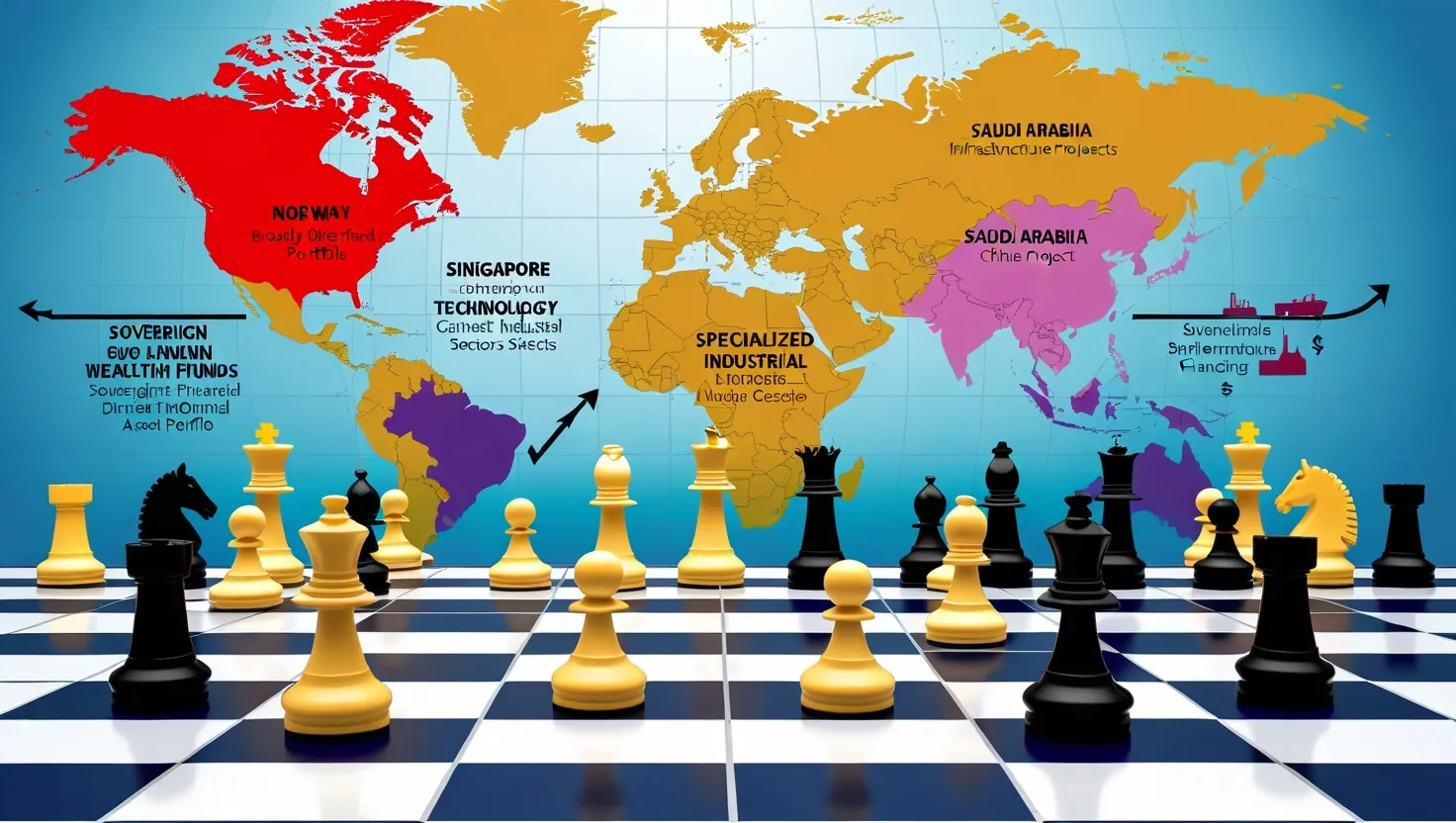Sovereign wealth funds have become major players reshaping global markets, wielding trillions in assets to pursue diverse strategies. Let’s explore some of the most intriguing approaches these state-owned investment vehicles are taking.
Norway’s oil fund stands out for its sheer size - over $1 trillion in assets - and sophisticated portfolio diversification. Rather than making big bets, they spread investments globally across more than 9,000 companies. This broad exposure helps smooth returns, but also gives Norway influence across industries. Interestingly, they’ve begun divesting from oil and gas stocks, despite the fund’s petroleum roots. It’s a bold move to reduce risk as the world transitions to cleaner energy.
Singapore’s GIC takes a different tack, making strategic investments in disruptive technologies. They were early backers of Alibaba and have poured billions into tech startups. GIC sees these bets as a way to future-proof their portfolio and gain insights into emerging trends. But how do they balance high-risk ventures with their mandate for stable long-term returns?
The UAE’s Mubadala has carved out a niche through sector specialization, building deep expertise in areas like semiconductors, aerospace, and healthcare. This focused approach allows them to take more active roles in portfolio companies and create industrial synergies. Their semiconductor investments, for instance, span the entire value chain from chip design to manufacturing.
“The future belongs to those who believe in the beauty of their dreams.” - Eleanor Roosevelt
This quote captures the ambitious vision driving many sovereign funds. Take Saudi Arabia’s Public Investment Fund (PIF), which is spearheading massive domestic projects to transform the Kingdom’s economy. From futuristic cities to entertainment complexes, they’re spending big to diversify beyond oil. But can top-down development create sustainable growth?
China’s sovereign fund has found a unique niche funding Belt and Road Initiative projects. This gives them influence across Eurasia while supporting Chinese companies’ global expansion. However, some recipient countries have grown wary of debt burdens and loss of control over strategic assets. How will China balance its economic goals with local sensitivities?
Australia’s Future Fund has gained attention for its inflation-hedging tactics. They’ve built up large positions in infrastructure, property, and other real assets as a buffer against rising prices. This approach proved prescient given recent inflation spikes. What other strategies can funds use to preserve purchasing power over decades?
Korea’s sovereign fund has embraced a collaborative model, actively seeking co-investments with other institutional investors. This allows them to participate in larger deals while spreading risk. It’s also a way to build relationships and gain expertise in new areas. But does this approach limit their ability to move quickly on opportunities?
Lastly, Alaska’s Permanent Fund has pioneered innovative income generation to provide annual dividends to state residents. Beyond traditional investments, they’ve explored everything from venture capital to litigation finance. It’s a creative way to deliver tangible benefits to citizens. Could other resource-rich regions adopt similar models?
“The best way to predict the future is to create it.” - Peter Drucker
Indeed, sovereign funds are actively shaping markets and economies through their investment choices. But their growing clout also raises questions. How much influence should state-backed entities have in free markets? What are the geopolitical implications as funds increasingly invest in strategic sectors abroad?
Transparency is another key issue. While some funds like Norway’s publish detailed holdings, others remain opaque. Greater openness could boost market confidence, but might also limit funds’ ability to execute strategies. Where’s the right balance?
Governance models also vary widely. Some funds operate at arm’s length from government, while others are closely tied to political leadership. How does this affect investment decisions and long-term performance?
Risk management approaches are evolving too. Funds face pressure to generate returns, but also to avoid losses that could impact national budgets. Many are exploring sophisticated hedging strategies and alternative assets. But are they equipped to handle major market dislocations?
The regional focus of sovereign funds is shifting as well. While North America and Europe remain top destinations, we’re seeing more investment flowing to emerging markets, especially in Asia. Funds are also increasing their allocations to private markets like venture capital and private equity.
“In the middle of difficulty lies opportunity.” - Albert Einstein
This quote aptly describes how some funds are approaching recent market volatility. Rather than retreating, many see it as a chance to acquire assets at attractive valuations. But timing such moves is tricky - how do they avoid catching falling knives?
Looking ahead, climate change will likely be a major factor shaping sovereign fund strategies. Many are already boosting clean energy investments and pressuring portfolio companies on emissions. Could sovereign funds become unlikely climate champions?
Another trend to watch is funds taking more active ownership roles. Rather than being passive investors, some are pushing for board seats and driving strategic changes in companies. This hands-on approach could yield better returns, but also attracts more scrutiny.
Talent is becoming a key differentiator too. Funds are competing to recruit top investment professionals, often offering private sector-style compensation. But this can be politically sensitive. How do they balance attracting talent with public accountability?
What do you think - are sovereign wealth funds a stabilizing force in global markets or a distorting influence? How might their strategies evolve in the coming years?
In the end, sovereign funds will likely remain major market movers for decades to come. Their long-term horizons and vast resources allow them to shape industries and influence economic trajectories. But with great power comes great responsibility. The most successful funds will be those that can balance financial returns with broader economic and social impacts.






